If you’re traveling to Japan, it can be quite helpful to learn at least a few key points when it comes to Japanese etiquette and taboos.
Japanese people are extremely polite and welcoming (one of the best things about visiting Japan), but many travelers worry about accidentally offending them by saying or doing the wrong thing.
While it’s natural to have this concern, an important thing to keep in mind is that Japanese people don’t expect you, as a traveler, to know all of their customs and manners. As long as you act kindly and with respect, you’ll fit right in – even if you do make an etiquette mistake (or two) once in a while!
That being said, making a little effort can go a long way, and Japanese people are very appreciative when travelers make the effort to learn their customs.
We hope the Japanese etiquette tips below help you get more out of your trip, and by following them you’ll be sure to impress Japanese people along the way:
- Basics of Bowing
- Removing Your Shoes in Japan
- Japanese Taxi Doors
- Passing Money When Paying
- Bathing in Onsen (Hot Springs)
- Eating and Drinking on the Street
- Ohashi (Chopsticks) Basics
- The Golden Rule of Japanese Etiquette
Originally written in 2014, this post was updated and republished on August 13, 2020.
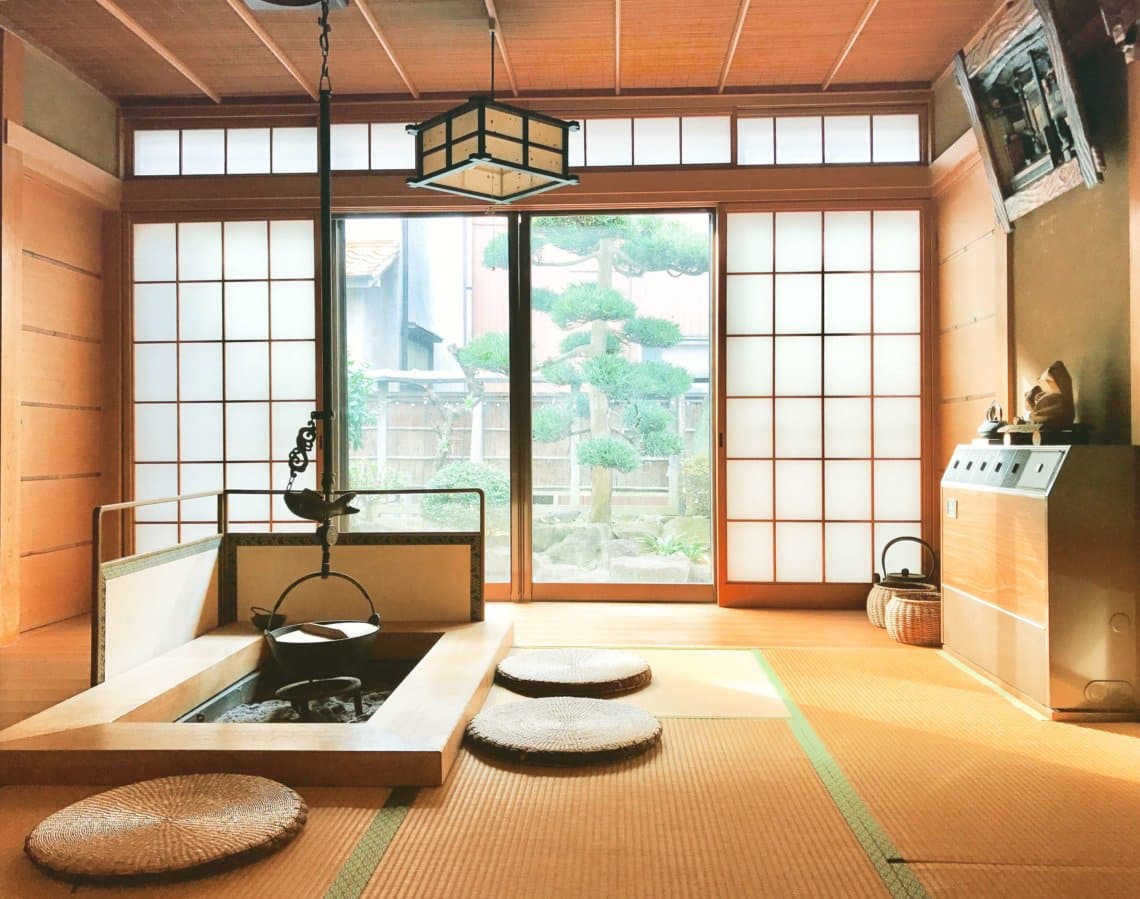
Basics of Bowing
Bowing is one of Japan’s most well-known customs, and most travelers are aware that Japanese people bow when greeting one another.
If you’re used to shaking hands when meeting people, it may be difficult to get used to bowing instead of shaking hands. But don’t worry: many Japanese people are accustomed to shaking hands when meeting non-Japanese, so whether you bow or put out your hand to shake, in most cases you’ll be fine either way.
Bowing is also used when thanking someone (or apologizing), and as a traveler in Japan you can expect to be on the receiving end of plenty of respectful bows of thanks. At hotels, ryokans, shops, and restaurants (particularly at higher-end establishments) it’s common for staff to bow deeply to customers.
Keep in mind that, as a customer, you’re not expected to bow back. Still, most first-time visitors to Japan can’t help it. While it may seem slightly odd to a Japanese person, these days Japanese people are not surprised (and are often amused) when visitors make small etiquette “mistakes” of this nature – so don’t sweat it!
Tip: For a fascinating up-close look at Japanese manners in action, we recommend Terrace House: Boys & Girls in the City, a Japanese television show on Netflix.
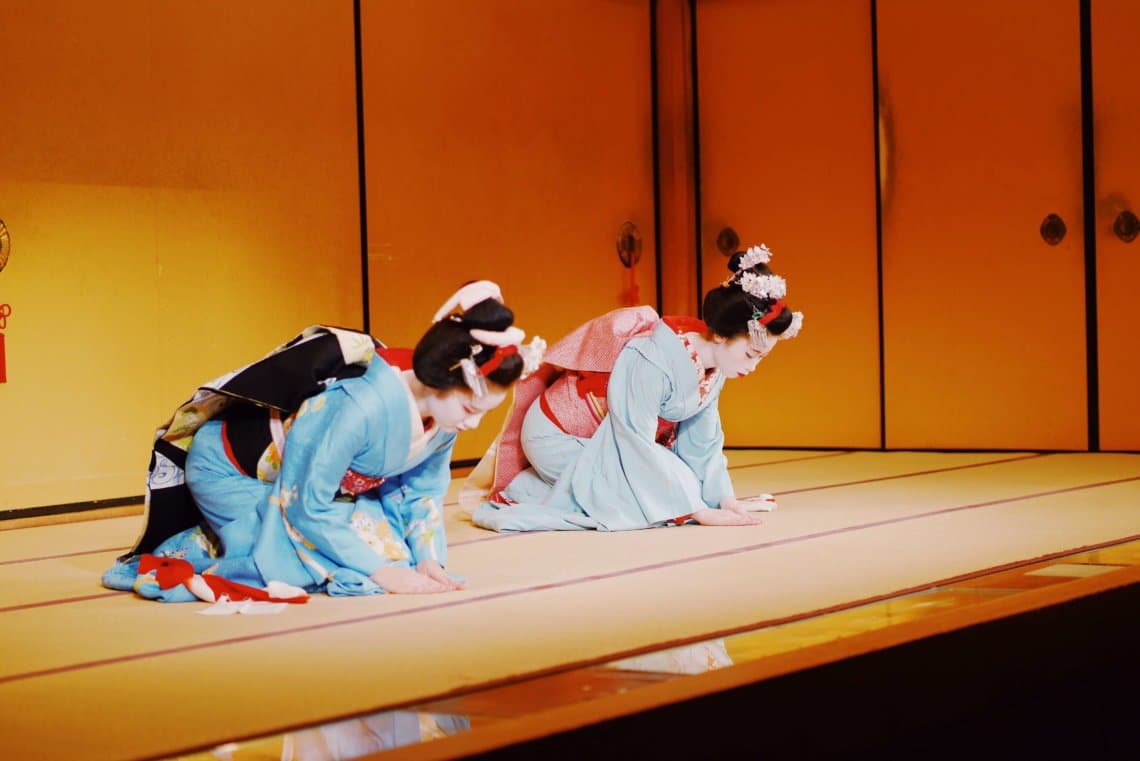
Removing Your Shoes in Japan
When traveling through Japan, you’ll find yourself having to take off your shoes often. For this reason, one of our top basic packing tips for a trip to Japan is to bring shoes that slip on and off easily. Bring nice socks, too, as they’ll be on display often!
In Japan, it’s most common to remove one’s shoes before entering a tatami room. Rooms with tatami matting abound in Japan, and you can expect to encounter tatami rooms at ryokans (Japanese-style inns), temples, and at traditional restaurants.
There are also other times when you’ll need to remove your shoes. For example, if you are lucky enough to be invited to visit a Japanese home, you’ll remove your shoes in the genkan (entryway).
Most visitors to Japan mess up the shoes rule at least once. While it’s definitely not the end of the world, it’s best to avoid this faux pas by simply being observant. If you notice a pile of shoes (or see others removing their shoes), you know what to do!
Pro Tip: Bathroom Slippers
At places such as traditional ryokans, old-fashioned restaurants, and even at some casual izakayas, you may encounter bathroom slippers.
Typically when you come across bathroom slippers, it means you’ve already removed your shoes elsewhere, and are already wearing slippers or geta (wooden clogs). You’ll leave your slippers or geta outside the bathroom, exchanging them for the bathroom slippers. Then, upon exiting the bathroom, switch back to your other slippers.
It’s extremely common for non-Japanese people to accidentally wear bathroom slippers all the way back to the table. If this happens to you, just remember you weren’t the first and you certainly won’t be the last!

Japanese Taxi Doors
Japan is rightly renowned for its technology and efficiency, so it’s no surprise that taxi doors in Japan open automatically! When you hail a taxi, the driver will pull up, and the door will automatically open for you.
Part of the beauty of this innovation is its simple brilliance: far from being high-tech, the driver opens and closes the door manually by means of a low-tech lever system. It takes a little patience and getting used to. Wait for the door to open, hop in, and then wait for the driver to close the door for you.
Japan’s incredible rail system is truly outstanding, but its clean, safe taxis (typically chauffeured by white-gloved taxi drivers) are also a highlight of traveling around Japan.
Passing Money when Paying
Speaking of taxis, it’s possible you may need to pay in cash, and if so this next etiquette tip will come in handy. In cities such as Tokyo, most taxis accept credit cards nowadays, but in smaller towns and in the Japanese countryside, many taxis only accept cash (read more about using cash and credit cards in Japan).
In Japan, money is rarely passed directly from hand to hand. This means that when you purchase an item or service, you won’t hand money directly to the cashier. Instead, you’ll place your payment (whether cash or credit) on the small tray provided. If change is due, your change will be placed here for you as well.
This practice is prevalent in Japan, and you can expect to encounter this common system in hotels, restaurants, taxis, conbini (convenience stores), and elsewhere.
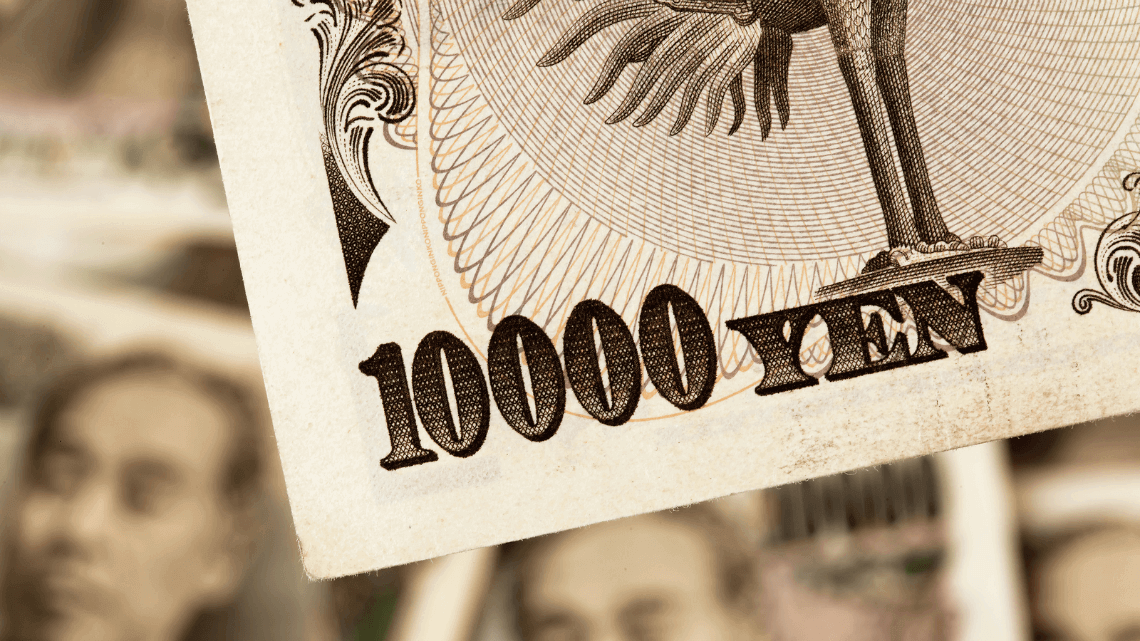
Tipping in Japan
What if there is no money tray? For example, say you would like to tip your private guide after a wonderful tour. This brings up a couple of questions: Should you tip? If so, how much (and how to hand over the money)?
Tipping is not nearly as common in Japan as it is in many other parts of the world. This means you truly don’t need to — and in fact should not — even think about tipping at restaurants or bars, or in taxis, for example.
For travelers from countries where tipping is prevalent, it may feel slightly uncomfortable to receive such gracious service and not leave a tip. Just keep in mind that tipping is truly not expected in most situations, and trying to leave a tip will likely lead to unnecessary confusion. So unlike in most countries, when in doubt, the general rule of thumb in Japan is to avoid leaving a tip.
However, there are a few scenarios where a tip may be appreciated, though not expected. A common such scenario for travelers is following an excellent tour. While guides in Japan (particularly top private guides) tend to be very well compensated for their services — and don’t generally expect or earn their living from tips — it is definitely acceptable to tip for outstanding service.
See our guide to tipping in Japan for more on this topic. Just remember to place the money into an envelope (or even fold it into a piece of paper) before politely handing it to your guide with two hands.
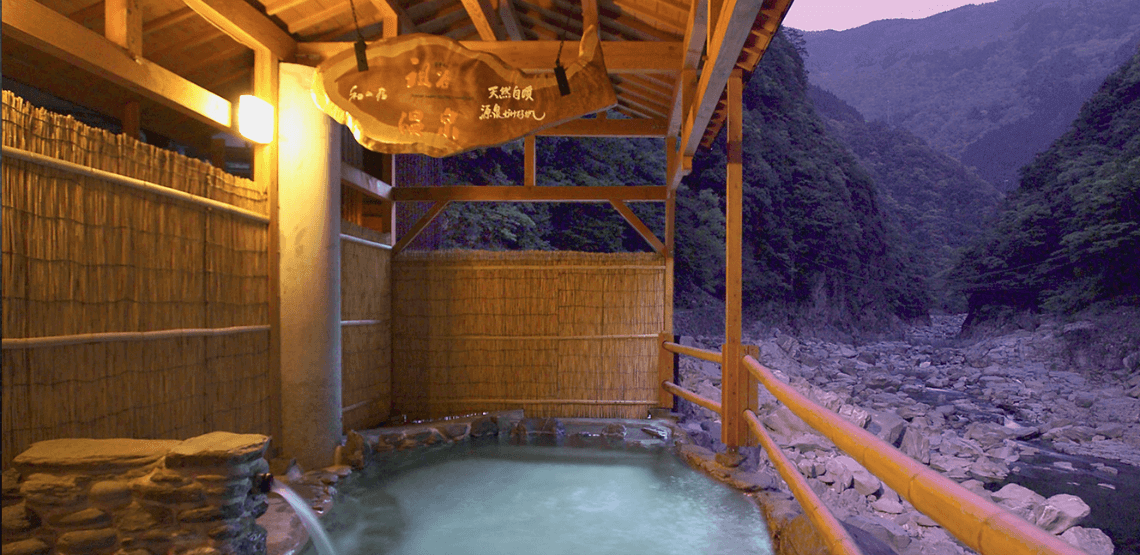
Bathing in Onsen (Hot Springs)
Perhaps nothing is more enjoyable, and potentially perplexing, to Japan visitors than bathing in onsen (hot springs), or a traditional neighborhood sento (bath house).
Onsen and sento offer a very authentic cultural experience, and when visiting there are a few key guidelines to keep in mind:
- First get clean, then bathe. At onsen and sento, before you reach the baths you’ll enter a washing area. The baths themselves are for relaxing!
- No swimsuits. At traditional onsen and sento, swimsuits are not permitted. Some modern-day onsen “theme parks” do allow swimsuits, though these tend to lack the character and authenticity of real traditional baths.
- Large towel, small towel. At onsen you’ll be provided with two towels: one large and one small. The large one is for fully drying off after your relaxing soak; take the small one to (not into) the bath with you, however it’s important not to let the towel touch the water. Most Japanese people place the towel either on their head or on a nearby rock or other surface.
Read more about onsen in our guide to staying at a ryokan.
Fewer Clients, Richer Experiences
We live and breathe Japan, and want you to experience the Japan we know and love. If you’re as obsessed with the details as we are, chances are we will be a good fit.
Eating and Drinking on the Street
Street food is not as common in Japan as it is in some other countries in Asia, although cities like Osaka and Fukuoka are notable exceptions with lively street food scenes.
In most Japanese cities, eating and drinking on the street (or on local trains, such as the Tokyo Metro for example), is generally frowned upon. Even so, these days it’s not terribly uncommon to see even locals scarfing down a quick snack en route to or from work. However, while this traditional rule of etiquette may be increasingly old-fashioned, it’s still a good one to keep in mind.
As for eating on trains: while it would be slightly uncouth to eat or drink on a commuter train, the shinkansen (bullet train) and other long-distance trains are a different story. Not only is it culturally acceptable to eat and drink on long-distance trains – it’s an integral part of the experience, and Japanese train stations are brimming with beautiful ekiben (bentos for train travel) and sake for the journey.
Bonus: If you have more questions about Japan, we put together a complete list of answers to the most common questions about Japan.
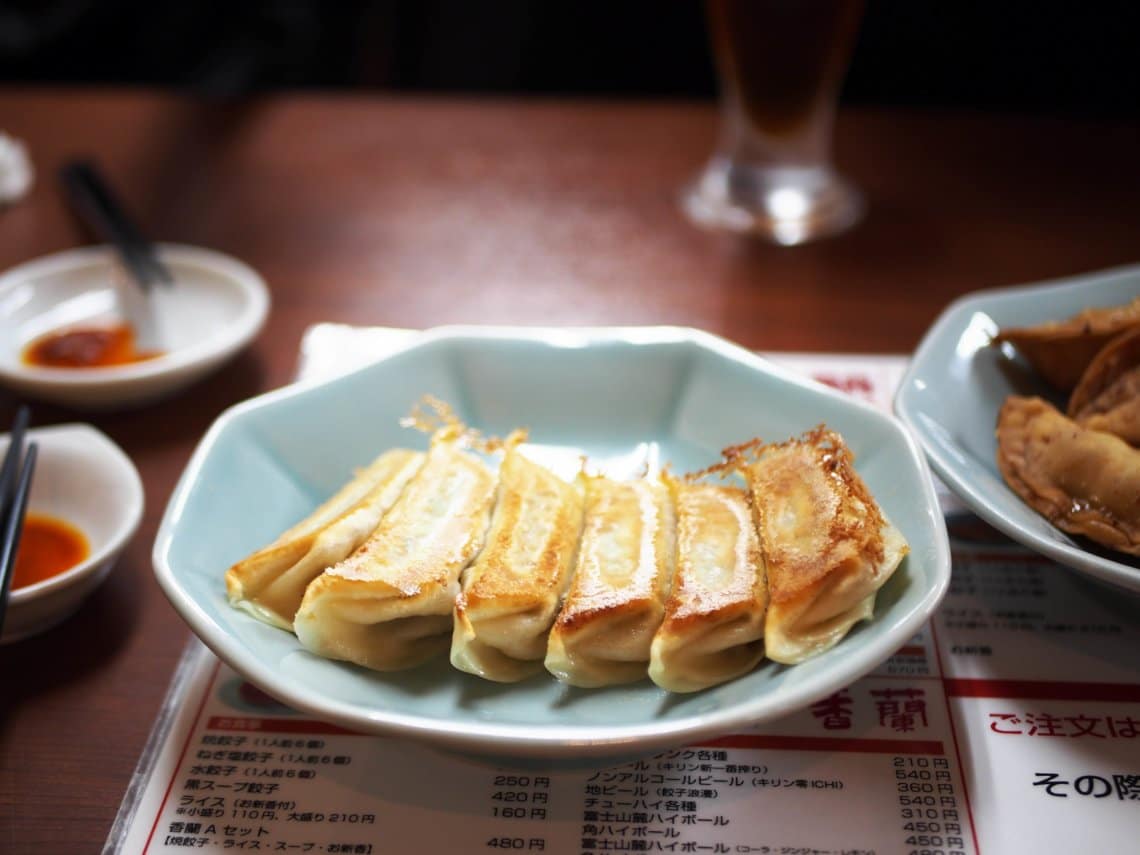
Ohashi (Chopsticks) Basics
Even if you consider yourself a chopsticks expert, you might not be aware of some important ohashi etiquette. While much of this is common sense, some might surprise you:
- Never point your chopsticks at another person, wave them in the air, or spear food with them.
- Don’t stick your chopsticks into a bowl of rice, as this is reminiscent of a funeral rite.
- Don’t pass food from chopsticks to chopsticks, as this too is reminiscent of a funeral rite.
- When serving yourself from a communal dish, use the opposite end of your chopsticks (not the end you put in your mouth) to serve yourself.
Oshibori
When you go to a restaurant or izakaya you’ll be given a refreshing towel, which will be hot or cold depending on the season. Use the towel to gently clean your hands, then fold it and place it on the table in front of you. Even though you will occasionally see people use this towel to wipe the sweat off their faces, this is generally considered slightly uncouth!

The Golden Rule of Japanese Etiquette
Don’t worry if you can’t remember all of these etiquette tips. Japanese people are extremely understanding, and realize that most travelers are simply not aware of all of their customs.
If you only remember one thing, the golden rule is to simply be respectful. As long as you you mind your surroundings and always act with respect, you’ll do great!



